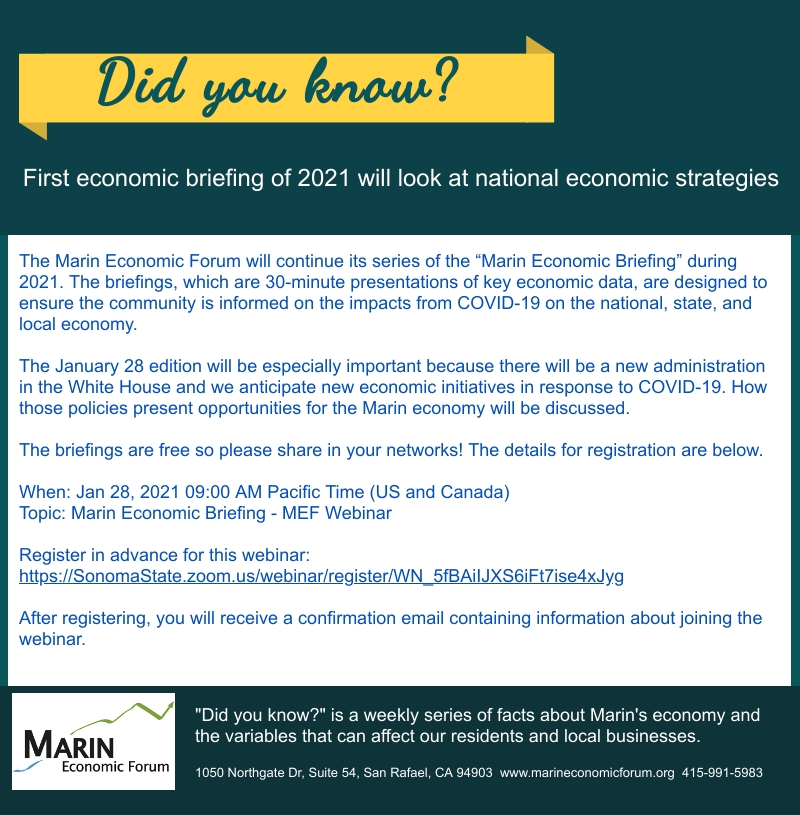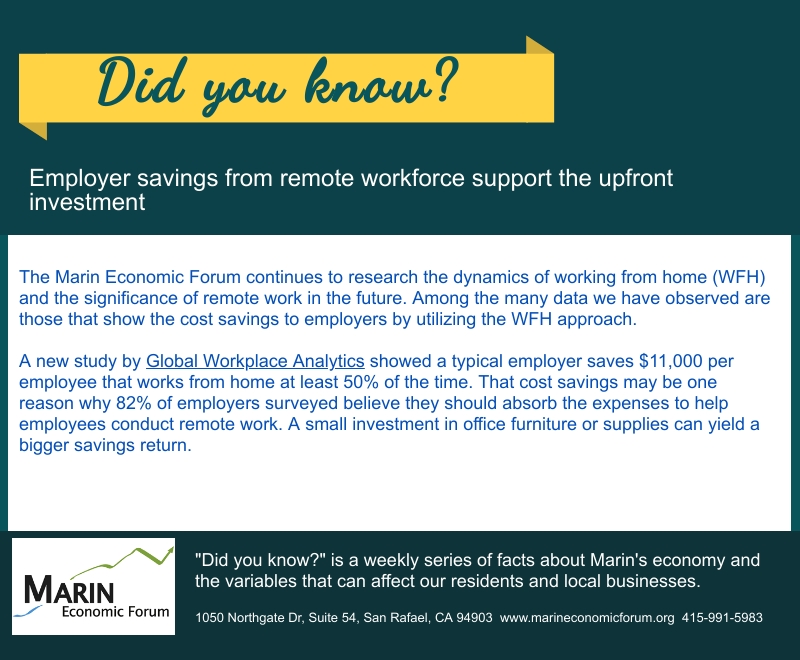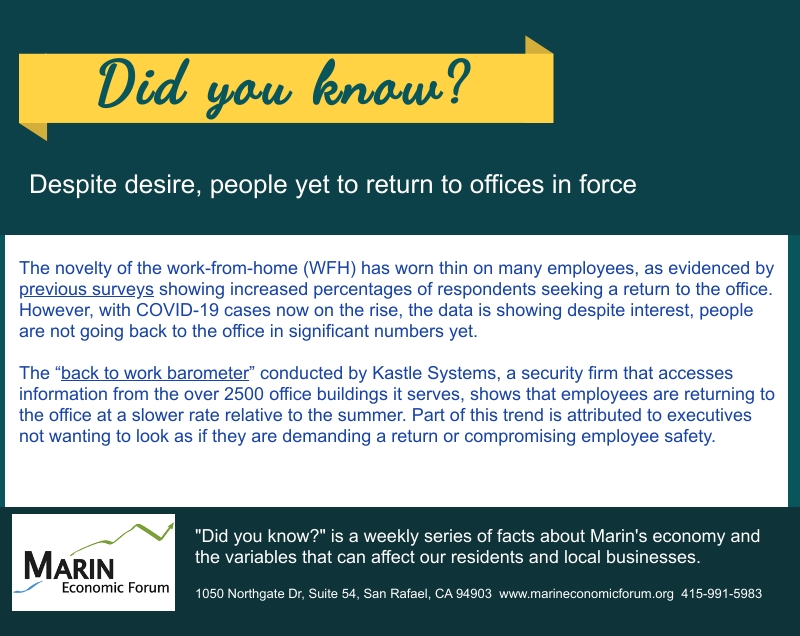MEF Economic Brief January 28, 2021
Be the first to receive updates and news from MEF by subscribing or liking us on our social media pages: Facebook, Twitter, and LinkedIn!
Be the first to receive updates and news from MEF by subscribing or liking us on our social media pages: Facebook, Twitter, and LinkedIn!



December, 2020
| According to most economists, including MEF’s Chief Economist Dr. Robert Eyler, the nation has moved from “recession” to “recovery.” That may be the case in Marin County, where unemployment has dropped to 5.4% from a peak of 11.2% in April. But a drill-down in the data shows differing circumstances across the resident population, suggesting that our recovery will need to be targeted, rather than one size fits all. The first and most obvious group are the small business owners. Remember that over 75% of all businesses in Marin County have 9 employees or fewer and within that group over 40% have between 1-4 employees. According to Opportunity Insights “Small Businesses Open” indicator, almost 40% of small businesses in the Bay Area have not reopened since the initial shelter in place orders. Many of these businesses are concentrated in the personal services sector, meaning they have been subject to government shutdowns and in many cases unable to operate. However, the needs of this group are well known, and they have a strong group of advocates, from Chambers of Commerce to the County’s “Marin Recovers Economic Recovery Task Force.” Supporting recovery for our small businesses must include financial support, community support (shop local!), and a productive (and empathetic) working relationship with regulators at the city and county level to adapt to a new consumer environment. There are two other groups of residents who remain critical to our recovery. The first group are Marin’s lower-income residents. A recent publication by the Public Policy Institute of California (PPIC) showed that rates of unemployment from coronavirus in California range from 25 to 30 percent for families with incomes under $30,000, compared to 5 to 10 percent for families with incomes above $150,000. Mean income data for Marin County will always be skewed by a large concentration of high income earners, but according to the most recent Census data, almost 23% of households in Marin have incomes of $50,000 or less. What is more concerning about the findings of the PPIC report was that based on the last recession (2008), low-income families in the Bay Area took on average 11 years to recover versus just 5 years for high-income families. The report also confirms that income inequality widened following the last 4 recessions in California, suggesting the same phenomena could occur this time as well. The second group are women. Nationally, 11.5 million women lost their jobs between February-May compared to just 9 million men. Hispanic women experienced the steepest decline in unemployment at 21%. The figures were so alarming that Federal Reserve Chairman Jerome Powell cited women’s unemployment as a concern to national economic recovery. These figures led people to label the recession of 2020 a “shecession” in acknowledgement that women were more deeply affected. Women make up a large proportion of employment in personal services jobs, and those jobs have declined 60% in Marin County since 2019. Especially hard hit were nail and hair salons, primarily owned by women residents of Marin. Getting women back to work is not simply a function of job openings; many have dropped out of the workforce to care for children or elderly parents. Around the Bay Area counties are developing economic recovery strategies that fit the needs of their residents and economy, and Marin will do the same. As we do so, recognizing where the pain points are and WHO they affect will be an important influence of WHAT those strategies will be. |
Mike Blakeley, CEO
Marin Economic Forum
Be the first to receive updates and news from MEF by subscribing or liking us on our social media pages: Facebook, Twitter, and LinkedIn!

Join MEF CEO Mike Blakeley and Chief Economist Dr. Rob Eyler to discuss the latest economic data and an update to the Marin Recovery Data Tool. Details are below.
When: Dec 10, 2020 09:00 AM Pacific Time (US and Canada)
Topic: MEF Economic Briefing
Register in advance for this webinar:
https://SonomaState.zoom.us/webinar/register/WN_eNIDMQDRROmlmkLKQH3bOw
After registering, you will receive a confirmation email containing information about joining the webinar.

Join MEF CEO Mike Blakeley and Chief Economist Dr. Rob Eyler to discuss the latest economic data and an update to the Marin Recovery Data Tool. Details are below.
When: Dec 10, 2020 09:00 AM Pacific Time (US and Canada)
Topic: MEF Economic Briefing
Register in advance for this webinar:
https://SonomaState.zoom.us/webinar/register/WN_eNIDMQDRROmlmkLKQH3bOw
After registering, you will receive a confirmation email containing information about joining the webinar.